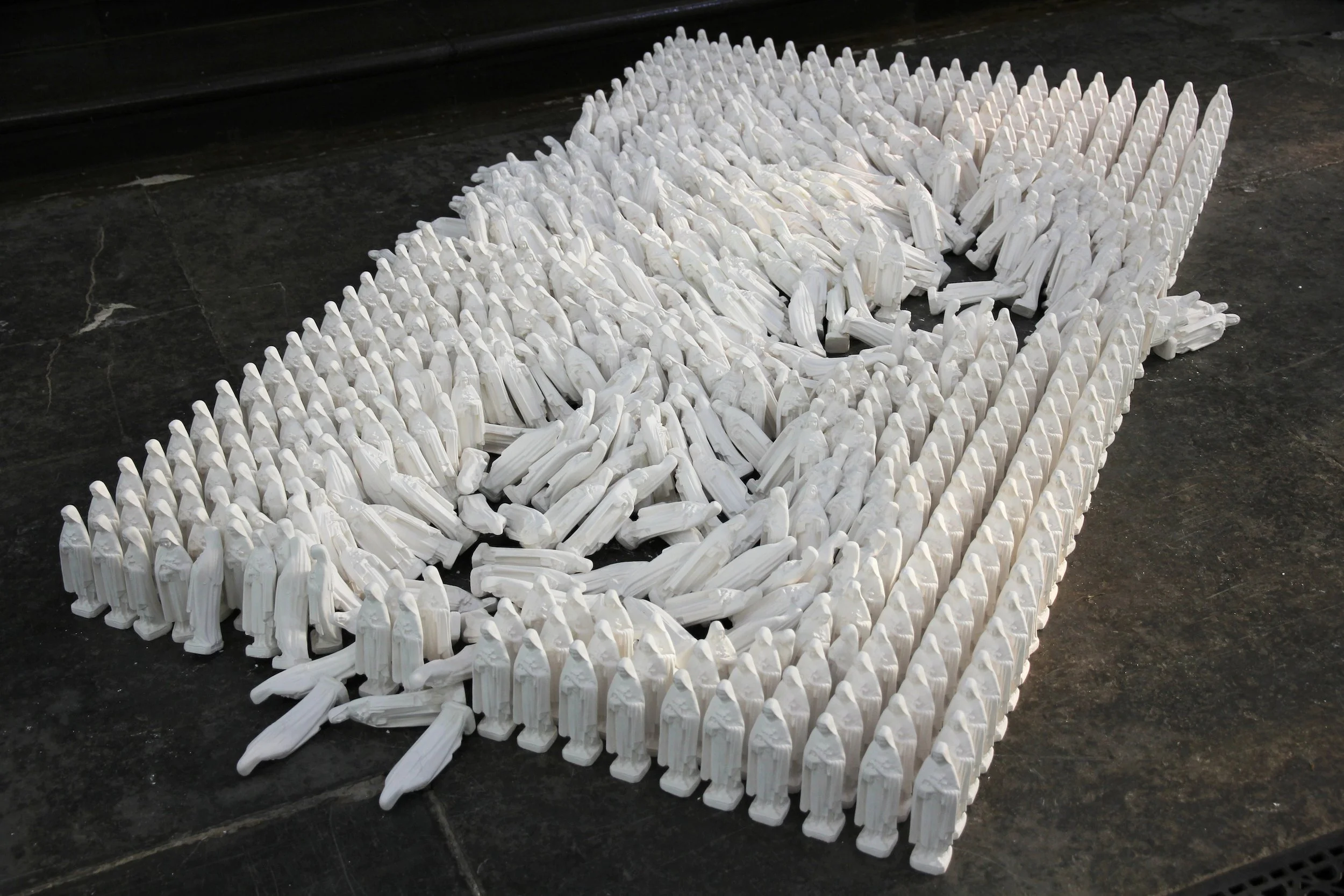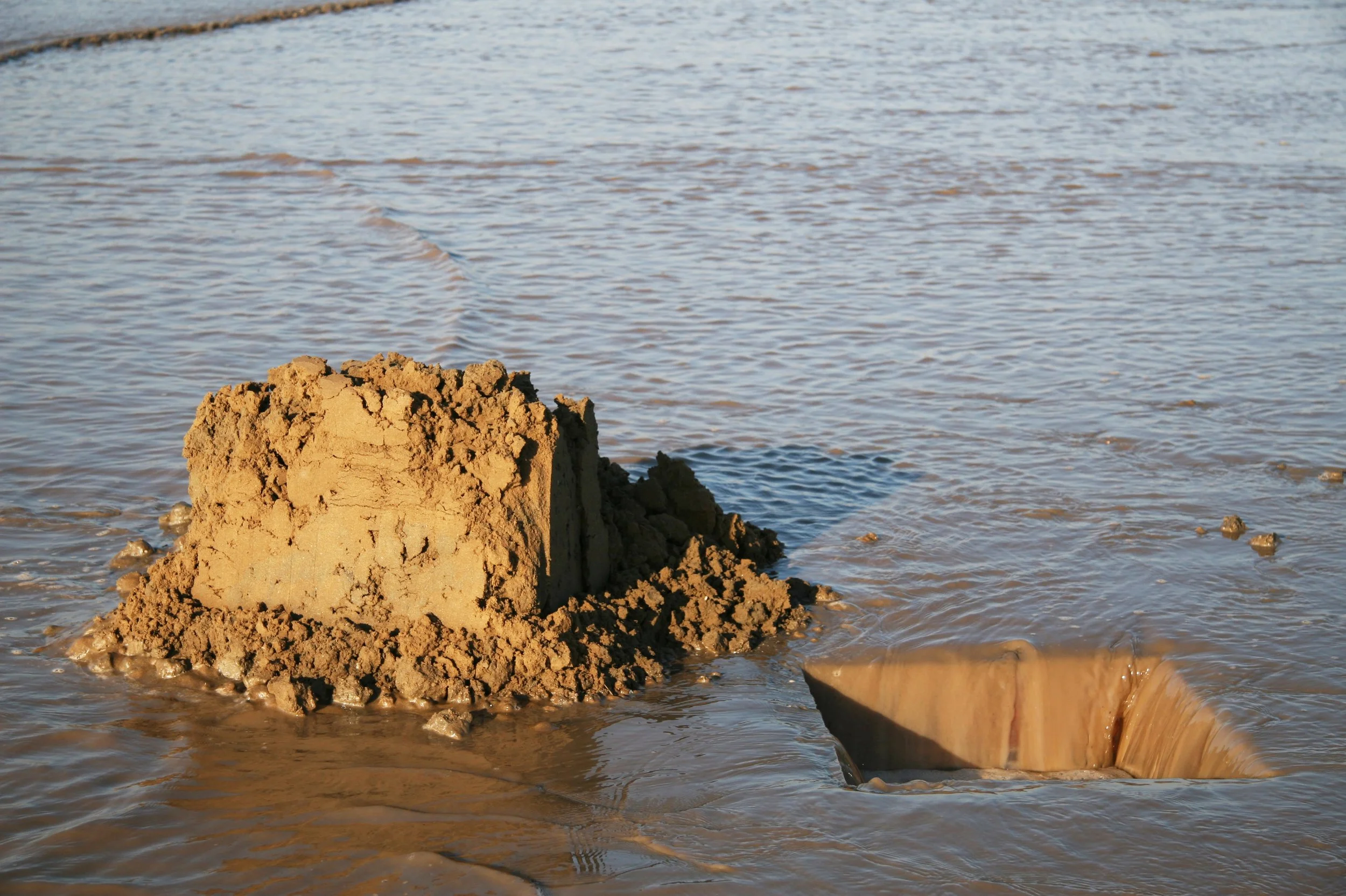Blythe Plenderleith

“Icons I am drawn to are not to intentionally provoke for shock value but to observe our own preconceived judgements and prejudices.”
Blythe Plenderleith is an artist whose sculptural works reframe everyday and devotional objects to examine belief, judgement, and the quiet tensions of social memory. In this interview, she discusses the icons that shape her practice, the role of physical sensation in her work, and how small-town narratives continue to inform her ideas.
Could you tell us a bit about yourself and your background?
Day one at the Royal College of Art I was introduced to a posse of peers who made a very interesting analogy. As a full scholarship student I was compared to that of a grey squirrel released into a sanctuary of ‘pure’ red squirrels; before you know it the institution will be overrun with us ‘state-schoolers’ and ‘non-fee-ers’. It was either that, or the assumption I shared the same characteristics: big families, big appetites and big personalities. Like a Top Trumps card, my dominance, aggression, territoriality, appearance and family genealogy were being strategically ranked. I hate to disappoint but I believe I was rather overvalued on each.
Your work often reinterprets familiar or decorative objects, from devotional figures to household forms, in unsettling ways. What draws you to these icons, and how do you decide when something crosses the line from comforting to provocative?
I relish the saying ‘crosses the line’. It’s an altogether dangerous position to tell or be told what has or hasn’t crossed the line. Though, the knee-jerk reaction that is inherent in all of us when confronted with information or iconography is fascinating. Hence the icons I am drawn to are not to intentionally provoke for shock value but to observe our own preconceived judgements and prejudices. Equally, I’m drawn to objects that provide space for conversation and debate; including discourse that may not be popular opinion.
Bed of Hails, 2021
Bed of Hails, 2021 (detail)
Pieces like the bed of small figurines or the darkly sculpted furniture suggest both reverence and discomfort. How important is physical sensation, the body’s relationship to touch and material, in the way you want viewers to experience your work?
People are walking experiences. I’ve never felt the need to spell out something to a viewer because they’ve already lived it in some form. I do however play on those experiences, merging the intuitive with the affected. Most situations are multifaceted so using physical sensation and the body’s relationship to touch and associated emotions are important. Like emotions, the viewers will sometimes experience my work with intimacy and imbalance.
Much of your practice appears to reflect on small-town life: its customs, values, and contradictions. How do those environments influence your ideas, and what do you find compelling about revisiting them through your work?
I don’t think small-town life is necessarily geographical. Of course the name suggests otherwise but for me it resides in the characteristics. I’ve met many an individual who describe anyone living outside of London a ‘country bumpkin’ and for me this is where the paradox and contradictions begin. Clearly said culprits have been blessed with a social grace they believe others have not. Nevertheless, I’m always drawn to observing a stereotype; in this case the notion of the unsophisticated and provincial or ‘where ordinary people live’. I enjoy giving value back to the oversimplified image.
Roses or Nails, 2021
Fathom (i), (v), (vii), Ongoing
Fathom (i), (v), (vii), Ongoing
What artwork have you seen recently that has resonated with you?
Niki de Saint Phalle and Jean Tinguely: Myths & Machines at Hauser and Wirth, Bruton showcased many: [Petit Autel] (Small Altar), Chandelier and Le Cercle Infernal de la Mort. A gentleman tried to interact with one of the ‘anti-machines’ as if trying to start a chainsaw. I don’t think I’ve ever seen an invigilator move with such vigour. I find the interchange between people and things fascinating and I wondered what Saint Phalle and Tinguely would have thought about this interaction they managed to create with their work. Though, one of the more memorable comments came from a viewer when visiting Phyllida Barlow: Unscripted. An elderly lady entered the gallery, turned to her son aghast and exclaimed ‘Why have you brought me into the store cupboard?’. The lady was entitled to her reaction but was met with equal eye rolling, pursed lips and tutting from others. Moments like that resonate with me. A collection of artworks managed to create momentary upheaval which lasted no more than entering the gallery space and leaving.
Tell us a bit about how you spend your day / studio routine? What is your studio like?
It differs. I’m out of the studio as much as I’m in it. Visiting locations, meeting people and observing objects is as essential to my practice as the making. I’ve never been a clock in and out kind of person hence the only routine I follow is a deadline. The studio. 2-jumper temperature. Space constantly yo-yos. Need shoes.
Is there anything new and exciting in the pipeline you would like to tell us about?
After months of negotiation, I will soon be spending time in Pennsylvania, working with the Amish community to realise new work.
All images courtesy of the artist
Interview publish date: 20/11/2025
Interview by Richard Starbuck




